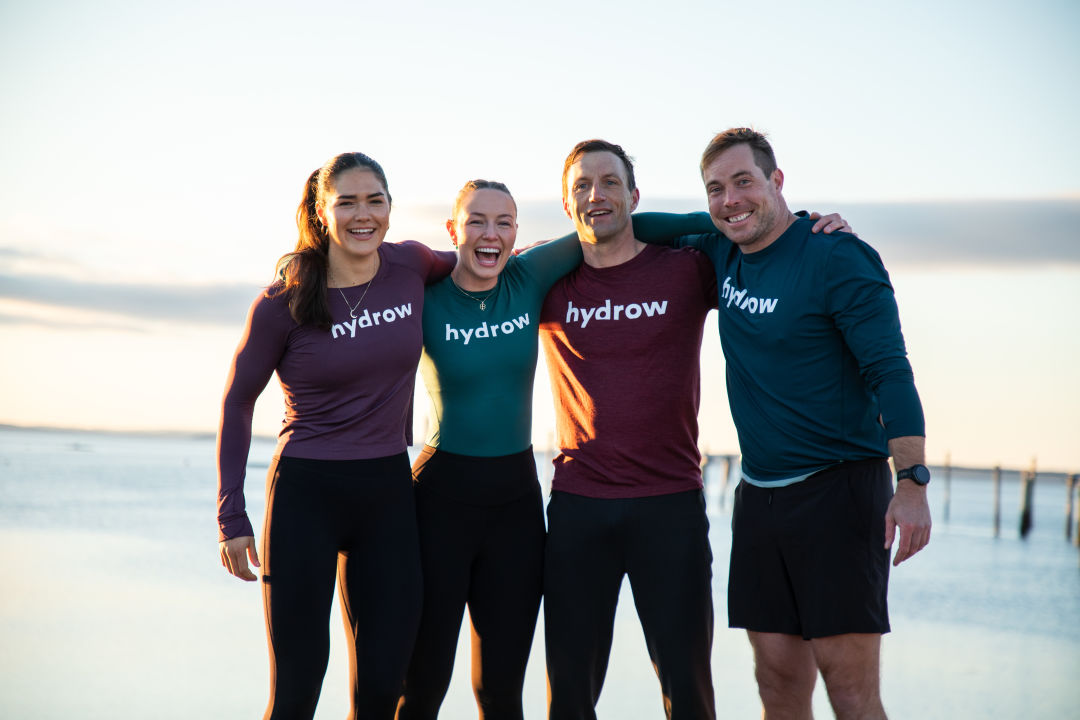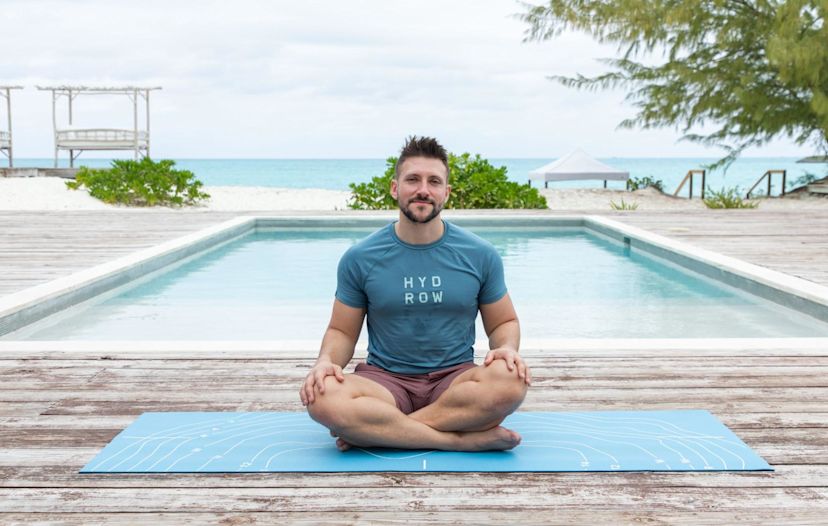How to Start Yoga: A Beginner’s Guide to Your First Practice

The many perks of starting yoga almost sound too good to be true—can one activity really improve your balance, flexibility, breathing, stress response, and body awareness? At this point, the benefits of yoga are well-documented, which means you’re not alone if you’re thinking about adopting this workout as part of your fitness routine.
If you’re wondering how to get started with yoga, you’re in the right place! This blog post will discuss how to start yoga in a safe and effective way so you can begin your personal journey toward a potentially life-changing yoga practice.
Below, we’ll cover:
Let’s get started!
Understanding yoga and the different styles of yoga
There are quite a few styles of yoga out there, and it’s important to find a style that matches your individual needs and goals. Perhaps the most common style of yoga you will see is “Vinyasa” or “Flow.” This is a physically challenging form of yoga that links flowing movement to breath. You might gravitate toward Vinyasa yoga if you are looking for a good workout that builds strength along with flexibility.
While they are technically distinct styles of yoga, you may also see “Restorative” or “Yin” used to describe a form of yoga that is slower-paced and offers more support through props like blocks, blankets and straps. The goal of these styles is generally to relax the body and, with Yin yoga in particular, access a deeper stretch through longer-held poses.
Briefly, some other styles of yoga that you might see include more traditional styles like “Ashtanga” and “Iyengar,” which are physically challenging and alignment-focused. Styles like “Slow Flow” offer a blend of Vinyasa elements set at a slower pace and may be a particularly good fit for newer students.
As if yoga isn’t challenging enough, “Hot Yoga” adds an additional challenge for those who really like to sweat. In general, we don’t recommend hot yoga for new students who aren’t yet comfortable with the poses, though.
How to set the right mindset with your yoga practice
One of the things that yoga teaches us is to notice the activity of the mind. When you start practicing yoga, it’s normal to notice some self-judgment (I’m bad at this) or impatience (we’ve been in this pose for a long time) or even comparison (wow, that person is so much better at yoga than me).
With practice, we learn to let those thoughts pop up and drift away. Yoga is hard and humbling for good reason—it helps us focus! When you are fighting to stay in a challenging balance pose like half moon, it’s impossible for the mind to wander somewhere else.
Do your best to cultivate a spirit of self-compassion while practicing yoga. Don’t worry so much about what other students are doing on their mats. Trust that with regular practice you will find your mindset naturally incline toward joyful humility.
Related blog: Can You Do Yoga Every Day?
Tips for investing in the right yoga equipment
One great thing about yoga is that you don’t need much equipment to get started beyond a yoga mat and potentially some props. The first thing I would recommend is purchasing an entry-level yoga mat along with some foam yoga blocks.
Another strategy is to attend a yoga class to see whether you like it before purchasing a mat. Nearly every yoga studio will have yoga mats available to rent and all of the props you might need. If you decide that you do enjoy practicing yoga, we strongly recommend buying your own mat.
Investing a bit more into a mat with more grip goes a long way toward making you feel more confident and comfortable in your practice. Anticipate that you may need to replace your yoga mat every few years, depending on your level of use, and clean your yoga mat often to keep it in good condition.
How to find resources for yoga
It has never been easier to get started with your yoga practice! If going to a yoga studio seems intimidating, you can start with an online beginner’s yoga class. Or, if you prefer trying out yoga in a group setting, check around your area to see which yoga studios offer beginner’s classes or workshops. This can be a great way to meet other people who are just starting their yoga journey and get feedback from an instructor as you learn the different poses.

Explore Hydrow’s library of 5,000+ rowing, circuit training, yoga, Pilates, and mobility workouts.
Basic yoga poses for beginners
Getting to know the fundamental yoga poses will help you feel much more confident. Here are a few that you’ll likely encounter in a yoga class:
1. Child’s pose
Seated on the shins, you’ll gently fold your upper body over your thighs. Allow the hips and forehead to get heavy. This is typically a resting pose used to steady the breath. A good yoga teacher will empower you to spend time in Child’s pose whenever you need to.
2. Downward-facing dog
From a plank position, press your hips up and back with a subtle bend in the knees. The goal of this shape is to create length in the spine. Focus on pressing the palms down and forward to lift the outer hips up and back.
3. Upward-facing dog
From a chaturanga position or from the belly, pull the chest forward and lift the front of the shoulders into a backbend. Focus on keeping the legs strong, with a dragging forward of the feet and hips.
This is a very challenging pose to do correctly, and can certainly be swapped out with a low cobra (a backbend where the belly and legs remain on the floor) or a cow pose (a backbend on hands and knees).
Related blog: 20 Yoga Poses for Beginners and Their Benefits
Tips for focusing on your breath and movement
One of the methods by which yoga helps us to focus the mind is through the linking of breath and movement. When it comes to the breath, try to smooth out the length of the inhale to match the length of the exhale. Try to pinpoint where you’re feeling the breath—maybe it’s the air moving past the nostrils, maybe it’s the expansion of the ribs or the belly—and center your attention there.
Notice when the breath becomes constricted or shallow. In a challenging yoga pose, or when we are feeling more fatigued, the breath can get a bit more ragged. Simply notice when that happens, and do your best to regain a smooth breath. This will help you stay more stable and better regulate your energy throughout your practice. Trust that this is something that will naturally improve if you stay consistent.
We always want to move in a controlled way during yoga. The transitions between each yoga pose are equally as important as the poses themselves. One tip is to control your gaze during trickier transitions. For example, when moving from triangle to half-moon pose, pick a spot on the floor to hold your gaze. This will improve your balance and make the transition easier.
Related blog: Should You Do Yoga Before or After Your Workout?
Tips for practicing mindfulness and meditation
The first step toward cultivating mindfulness and acquiring a meditation practice is to acknowledge that it’s tremendously difficult. For many people, yoga is a rare opportunity to simply sit with their thoughts. We learn quickly how chaotic our mind is!
It’s a cliche in yoga to say that the hardest pose is just showing up on your mat. If that’s true, then I would argue that the second hardest pose is simply sitting and breathing. I have found it helpful to drop the term “meditation,” as it can put some pressure on us to feel like we’re achieving some altered state of being. In reality, the experience of meditating is often frustrating, messy, and devoid of that elusive feeling of calm we are supposedly chasing.
Accept that mindfulness is a practice; don’t let the frustration you feel prevent you from showing up. At its simplest, mindfulness is just a practice of returning—to your breath, to your body, to the present moment—and we simply do our best.
Related blog: Is Yoga a Good Workout?
Tips for building a consistent yoga practice
Staying consistent with your yoga practice requires focusing on showing up, honoring your energy levels, and remembering that it’s worth it.
I said it before that the hardest yoga pose is showing up and rolling out your mat. Once you’ve done that, it’s a win no matter what else happens. The hard part is over. Fell out of a pose? Sweat pouring into your eyes? Hey, at least you showed up!
As I mentioned, there are a bunch of different styles of yoga out there, and each is a little bit different. If you’re feeling run down and exhausted, consider a slower or more restorative style. If you’re overwhelmed and scrambled, maybe that’s the day to work things out in a more challenging Vinyasa class.
Never have I ever left a yoga class and thought, “Well, that wasn’t worth it. I should have stayed home.” It is always worth practicing yoga because you feel so much better afterwards. Your mind will be clearer and your body will be more open. Push yourself to practice consistently a few times and you will quickly come to associate yoga with these feelings. Simply put, I kept practicing yoga because it made me feel good. The rest is history!
Tips for staying safe when starting yoga
When starting yoga, it’s important to pace yourself and listen to your body. It’s natural to feel some level of discomfort in certain poses, especially if you’re suddenly moving your body in new ways, but there should never be a feeling of acute pain. That’s a definite sign to back off or choose a different pose.
You shouldn’t ever feel pressure for your pose to look exactly like the person next to you. Quality yoga instruction will include a variety of options for students of all levels. Like we discussed earlier, comparison is a natural reaction but it’s not a useful one.
From a practical standpoint, be careful especially in heated yoga classes where your mat can get slippery due to all the sweat. There are yoga towels you can use that provide good grip so that you aren’t sliding around your mat.
Related blog: What Is the Difference Between Yoga and Pilates?
Tips for progressing in your yoga practice
My No. 1 tip is to just keep showing up. Everything in yoga is additive; whether you’re twisting or doing hip-openers, every moment on your yoga mat will make you a more well-rounded and confident practitioner.
Another important tip is to keep trying new styles and new yoga teachers until you find the right fit for you. I’ve met plenty of people who tried yoga one time, didn’t like it, and swore it off forever. By trying different styles and teachers, you’re more likely to land on yogic teaching that resonates with you.
Last, yoga isn’t ultimately about what happens on the mat. At its core, yoga is a system designed to help you navigate life more gracefully. We work through intentional challenges on the mat so that we can meet the challenges of the world with more resolve. It is a reminder of our inherent capacity. Progressing in your yoga practice is less about holding a handstand and more about how you treat yourself and those around you. Notice those increased moments of kindness and patience: They are proof of your progress in the practice of yoga.
Want to get started with yoga?
If you’re interested in incorporating yoga into your fitness routine, be sure to check out Hydrow’s library of yoga workouts. Our yoga library offers guided workouts designed to help you build strength, improve mobility, and bring calm to your day.
Explore Hydrow’s yoga workouts today.

Explore Hydrow’s library of yoga workouts from around the world.













